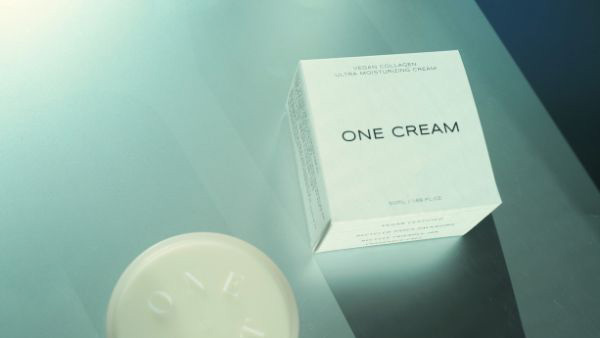What are antioxidants?
To put it very simply, antioxidants are substances that prevent cell damage due to oxidation.
The Process of Oxidation
For the functioning of our muscles, our organs and our immune functions, our cells naturally produce energy by burning sugar, fat or even proteins.
Oxidation is a natural and inevitable phenomena due to these chemical reactions which take place in the presence of oxygen and generate a form of waste, called “free radicals”.
Free radicals are weakened molecules in our body that react quickly and attempt to strengthen themselves by weakening the molecules around them.
Exposure to pollution, sunlight, radiation, cigarette smoke and herbicides can also create free radicals in your body.
Consequences of Oxidation
In the long run, the free radicals damage cells. Major cell damage can reduce our body’s ability to protect itself from diseases, cancer and premature aging. This is where antioxidants come in.
Antioxidants = against oxidation
Antioxidants help fight these attacks. Antioxidants prevent oxidation by strengthening the weakened molecules before they have weakened another molecule.
The aim is not to stop oxidation which is impossible, but to strengthen our cells so as to keep healthy longer, to reach eternal youth.
The best, and easy antioxidant-rich foods
Dark Chocolate
Dark chocolate is delicious, nutritious and one of the best sources of antioxidants. Generally speaking, the higher the cocoa content, the more antioxidants the chocolate contains.
Pecans
Pecans are popular nuts rich in minerals, healthy fats and antioxidants. They may also help raise blood antioxidant levels and lower bad cholesterol.
Almonds
Rich in essential fatty acids and antioxidants, almond is a true ally of our cardiovascular health. They also play a role in the immune system, dental and muscle health.
Blueberries
Blueberries are among the best sources of antioxidants in the diet. They are rich in anthocyanins and other antioxidants that may help reduce the risk of heart disease and delay the decline in brain function that happens with age.
Strawberries
Like other berries, strawberries are rich in antioxidants called anthocyanins, which may help reduce the risk of heart disease.
Goji berries
Goji berries are a rich source of antioxidants, including a unique type known as Lycium barbarum polysaccharides. These have been linked to a reduced risk of heart disease and cancer, and may help fight skin aging.
Raspberries
Raspberries are nutritious, delicious, and packed with antioxidants. Like blueberries, they are rich in anthocyanins and have anti-inflammatory effects in the body.
Green tea and coffee
Coffee and green contain phenolic acids (caffeic acids for coffee and oxalic acids for tea) as well as flavonoids. Moderate coffee consumption can have benefits in reducing the risk of cardiovascular and digestive diseases. Coffee would also have the advantage of fighting depressive states. Rich in proteins and minerals, green tea has beneficial effects on the digestive system
Ginger
Ginger is rich in polyphenols, antioxidants that neutralize free radicals. Cramps, bloating, aerophagia, ginger is ideal for relieving all intestinal ailments. Antibacterial, anti-inflammatory and analgesic, they soothe rheumatism, dental pain and sore throat. It also strengthens the respiratory system and stimulates blood circulation, hence its fame as an aphrodisiac.
Eating Rainbow Diet Every Day to Look Beautiful Forever
We have to understand the ingredients’ color to understand antioxidant properties. In general, fruits and vegetables fall into five different colour categories: red, purple/blue, orange, green and white/brown. Each colour carries its own set of unique disease fighting chemicals called phytochemicals. It is these phytochemicals that give fruits and vegetables their vibrant colour and of course some of their healthy properties.
Red: Lycopene
An antioxidant that helps keep your heart healthy and protects against some cancers.
Good Food Sources of Lycopene
- Tomato
- Radishes
- Strawberries
- Watermelon
- Red Apples
- Cherries
- Raspberries
- Red Grapes
Orange/Yellow: Beta-Carotene
An antioxidant that, when digested, is converted into vitamin A, contributing to healthy eyes and a strong immune system. The spice turmeric is also an effective antioxidant.
Good Food Sources of Beta-Carotene
- Carrots
- Lemon
- Sweet Potato
- Pumpkin
- Pineapples
- Mango
- Corn
- Orange
- Peaches
- Apricots
Green: Chlorophyll
An antioxidant that works together with other vitamins and minerals to help the body protect itself against cancer
Good Food Sources of Chlorophyll
- Spinach
- Asparagus
- Avocado
- Broccoli
- Peas
- Cabbage
- Celery
- Cucumber
- Kiwi
Blue/Purple: Anthocyanin
An antioxidant that can help boost the immune system and reduce the risk of cancer.
Good Food Sources of Anthocyanin
- Beetroot
- Red cabbage
- Eggplant
- Blackberries
- Blueberries
- Purple grapes
- Plums
Brown/White: Allicin
An antioxidant well known for its antiviral and antibacterial properties.
Good Food Sources of Allicin
- Cauliflower
- Mushrooms
- Garlic
- Bananas
- Dates
- Onions
- Ginger
- Parsnips
- Turnip
The rainbow diet is a simple way to say that the variety of fruits and vegetables in your diet will get you the vitamins and minerals you need. It also calls out the fact that you can learn a lot about your food just by looking at it.
Let’s all start to eat healthy foods. Give us a call at Eatology and speak to our dietician if you have further enquiries.
Sources:
Phytochemicals: Eating from the Rainbow!
http://www.todaysdietitian.com/newarchives/110308p34.shtml
Ultimate Kratom Guide | Beginner to Strains, Extract, Dosage


